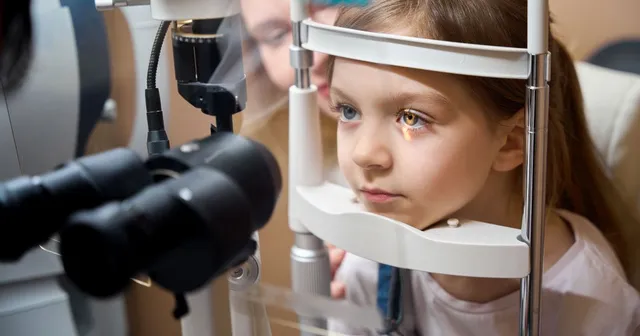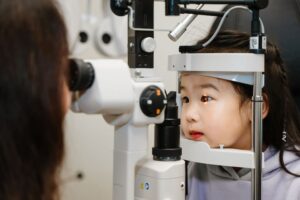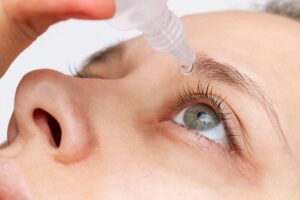As parents, we do everything to keep our children healthy—ensuring they eat right, sleep well, and stay active. But one vital area that’s often overlooked is eye health. In an increasingly digital world, children are exposed to screens at a young age, making it more important than ever to protect their vision and establish healthy habits early on.
This guide covers what every parent should know about children’s eye health—common issues, warning signs, prevention tips, and when to see a specialist.
Why Children’s Eye Health Matters
Children rely on their vision to learn, play, and interact with the world. According to the Centers for Disease Control and Prevention (CDC), vision problems are among the most prevalent disabling conditions in children. Left unaddressed, these problems can lead to developmental delays, learning difficulties, and reduced confidence in school and sports.
Fortunately, many eye conditions in children are preventable or treatable when detected early.
Common Eye Issues in Children
Understanding common pediatric eye conditions helps you stay proactive. Here are a few to watch for:
1. Refractive Errors
These include:
- Myopia (nearsightedness)
- Hyperopia (farsightedness)
- Astigmatism
Refractive errors occur when the shape of the eye prevents light from focusing correctly on the retina. These are easily corrected with glasses.
2. Amblyopia (Lazy Eye)
Amblyopia develops when one eye doesn’t develop proper vision. It can lead to long-term vision loss if not treated early, typically before age 7.
3. Strabismus (Crossed Eyes)
Strabismus occurs when the eyes are not aligned properly. This condition can cause double vision or lead to amblyopia.
4. Digital Eye Strain
Also known as computer vision syndrome, this results from excessive screen time. Symptoms include dry eyes, headaches, blurred vision, and difficulty focusing.
Warning Signs Parents Should Watch For
Kids don’t always know how to express vision problems. Look out for these signs:
- Frequent squinting or blinking
- Holding books or screens too close
- Complaints of headaches or eye pain
- Avoiding reading or close-up work
- Covering one eye to see better
- Poor performance in school or sports
If you notice any of these behaviors, schedule an eye exam with a pediatric optometrist.
Recommended Eye Exam Schedule for Kids
| Age | Recommended Eye Exam |
|---|---|
| 6 months | First eye exam (check for signs of strabismus, refractive errors) |
| 3 years | Check vision development and alignment |
| 5–6 years | Full eye exam before starting school |
| Every 1–2 years | Ongoing exams if no issues; annually if child wears glasses or contacts |
Tip: Schools may offer basic vision screenings, but they do not replace a comprehensive eye exam.
The Impact of Screens on Children’s Vision
With remote learning, video games, and digital entertainment, screen use among children has skyrocketed. Prolonged screen exposure can contribute to:
- Eye fatigue
- Dry eyes
- Poor posture and neck strain
- Disrupted sleep due to blue light exposure
How to Protect Kids from Digital Eye Strain
- Follow the 20-20-20 rule: Every 20 minutes, look at something 20 feet away for 20 seconds.
- Limit screen time: Aim for no more than 1 hour per day for children aged 2–5, and consistent breaks for older kids.
- Use proper lighting: Avoid screen glare and ensure ambient lighting.
- Encourage outdoor play: Natural daylight supports healthy eye development and may reduce the risk of myopia.
Nutrition for Healthy Eyes
A balanced diet rich in eye-supporting nutrients can promote long-term vision health. Include:
- Vitamin A: Found in carrots, sweet potatoes, and spinach
- Omega-3 fatty acids: Found in fish, flaxseeds, and walnuts
- Lutein and Zeaxanthin: Found in leafy greens and eggs
- Vitamin C and E: Found in citrus fruits, berries, and nuts
Encouraging kids to eat a variety of fruits, vegetables, and healthy fats can lay a strong foundation for vision health.
Chart: Screen Time vs. Outdoor Play for Eye Health
| Activity | Impact on Eye Health | Recommended Limit/Goal |
|---|---|---|
| Screen Time | Can cause eye strain and myopia progression | ≤ 2 hours/day (for school-age children) |
| Outdoor Play | Reduces risk of myopia; encourages distance focusing | ≥ 1–2 hours/day |
FAQs About Kids’ Eye Health
1. At what age should my child get their first eye exam?
The American Optometric Association recommends an eye exam at 6 months, then at 3 years, and before starting school. Earlier exams may be needed if you notice signs of vision problems.
2. Is it normal for kids to blink or rub their eyes often?
Occasional rubbing is normal, but frequent rubbing or blinking may signal eye strain, allergies, or vision problems.
3. Can screen time cause permanent eye damage?
There’s no solid evidence of permanent damage, but it can cause digital eye strain and contribute to nearsightedness. Regular breaks and outdoor time are essential.
4. Are blue light glasses necessary for children?
Blue light glasses may help reduce digital eye strain and improve sleep quality, especially for older kids using screens in the evening. They’re optional but can be beneficial.
5. What should I do if my child refuses to wear glasses?
Make it fun! Choose stylish frames, let them help pick them out, and positively reinforce wearing them. Consistency and support help develop the habit.
Conclusion: Protecting Your Child’s Vision Starts Early
Your child’s eyes are their window to learning, growth, and exploration. By staying vigilant, scheduling regular eye exams, encouraging healthy habits, and managing screen time, you can support lifelong visual wellness.
Eye health doesn’t have to be complicated. Small changes—like outdoor play, a balanced diet, and proper screen use—can make a big difference.
If you’re ever unsure, don’t wait—consult an eye care professional to ensure your child’s vision is on the right track.




